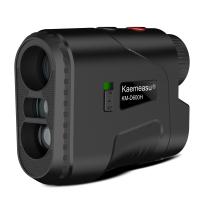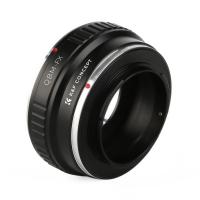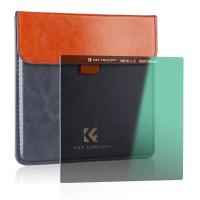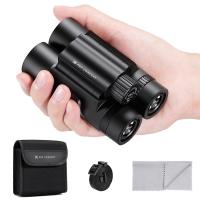Who Made A Microscope ?
The first microscope was invented by Dutch spectacle maker Zacharias Janssen and his father Hans in the late 16th century. However, credit for the discovery of microorganisms using a microscope is usually given to Antonie van Leeuwenhoek, a Dutch scientist who made his own simple microscopes and used them to observe and describe microscopic organisms in the 17th century.
1、 - Invention of the microscope

Invention of the microscope
The invention of the microscope is attributed to two Dutch spectacle makers, Zacharias Janssen and his father Hans Janssen, in the late 16th century. They discovered that by placing two lenses in a tube, they could magnify objects. However, it was Antonie van Leeuwenhoek, a Dutch scientist, who is credited with the development of the microscope as a scientific tool. He improved the design of the microscope and used it to observe and describe microorganisms, which he called "animalcules."
Recent research suggests that the invention of the microscope may have been a collaborative effort among several individuals in different parts of Europe. For example, it is believed that Italian scientist Giuseppe Campani may have independently developed a microscope around the same time as the Janssens. Additionally, English scientist Robert Hooke is credited with improving the microscope and using it to make important discoveries in biology.
Regardless of who exactly invented the microscope, its impact on science and medicine cannot be overstated. The ability to observe and study microscopic organisms and structures has led to countless discoveries and advancements in fields such as microbiology, genetics, and medicine. Today, microscopes continue to be an essential tool in scientific research and education.
2、 - Antonie van Leeuwenhoek's contribution

Antonie van Leeuwenhoek's contribution to the development of the microscope is significant. He is often credited with being the inventor of the microscope, although this is not entirely accurate. Leeuwenhoek was a Dutch scientist who lived in the 17th century and is known for his pioneering work in microbiology. He is credited with being the first person to observe and describe microorganisms, which he called "animalcules."
Leeuwenhoek's microscopes were not like the ones we use today. They were simple, single-lens devices that he made himself. He ground the lenses himself and used them to observe a wide range of specimens, from pond water to human blood. His microscopes were capable of magnifying objects up to 300 times, which was a significant improvement over the microscopes that existed at the time.
While Leeuwenhoek did not invent the microscope, he did make significant contributions to its development. He was the first person to use a microscope to observe living organisms, and he made many important discoveries about the microscopic world. His work paved the way for future scientists to study microorganisms and led to the development of more advanced microscopes.
Today, we know that the microscope was not invented by a single person, but rather developed over time by many different scientists. However, Leeuwenhoek's contributions to the field of microbiology and his pioneering work with microscopes cannot be overstated. He was a true innovator and his legacy lives on in the field of microbiology today.
3、 - Robert Hooke's contribution

Robert Hooke's contribution to the development of the microscope is significant. He is credited with creating one of the earliest microscopes in the 17th century. Hooke was a scientist, inventor, and architect who made many contributions to various fields of study. He is best known for his work in microscopy, where he made significant advancements in the field.
Hooke's microscope was a compound microscope, which means it used two lenses to magnify the image. He used a thin piece of glass as a lens, which he called a "fly's eye." This lens was able to magnify objects up to 30 times their original size. Hooke used his microscope to study a variety of objects, including insects, plants, and even human hair.
Hooke's microscope was not the first microscope, but it was one of the earliest to use a compound lens system. His microscope was also one of the first to be used for scientific purposes. Hooke's work in microscopy helped to pave the way for future advancements in the field.
Today, the microscope has become an essential tool in many fields of study, including biology, medicine, and materials science. Microscopes are used to study everything from cells and bacteria to metals and crystals. The latest advancements in microscopy include the development of electron microscopes, which use beams of electrons to magnify objects at a much higher resolution than traditional microscopes.
In conclusion, while Robert Hooke was not the sole inventor of the microscope, his contribution to the development of the compound microscope was significant. His work in microscopy helped to pave the way for future advancements in the field, and the microscope has become an essential tool in many fields of study today.
4、 - Evolution of microscope technology

Who made a microscope is a question that has been asked for centuries. The first microscope was invented in the late 16th century by Dutch spectacle makers Hans Lippershey and Zacharias Janssen. However, it was Antonie van Leeuwenhoek, a Dutch scientist, who is credited with improving the microscope and using it to make groundbreaking discoveries in microbiology.
Over the years, the microscope has undergone significant technological advancements. In the 19th century, the development of achromatic lenses allowed for clearer and more detailed images. The invention of the electron microscope in the 1930s revolutionized the field of microscopy, allowing scientists to see structures at the atomic level.
Today, the latest advancements in microscopy technology include super-resolution microscopy, which allows for imaging at the nanoscale level, and 3D imaging techniques, which provide a more comprehensive view of biological structures.
The evolution of microscope technology has had a profound impact on scientific research, enabling scientists to make groundbreaking discoveries in fields such as biology, medicine, and materials science. From the first simple microscope to the latest cutting-edge technology, the microscope has played a crucial role in advancing our understanding of the world around us.




























There are no comments for this blog.